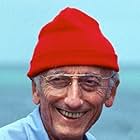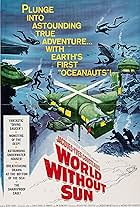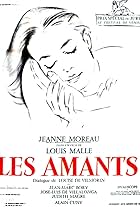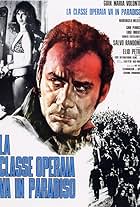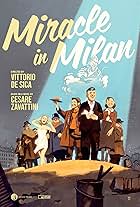IMDb RATING
6.9/10
1.9K
YOUR RATING
A documentary about the undersea explorers and how they penetrate into the underwater world.A documentary about the undersea explorers and how they penetrate into the underwater world.A documentary about the undersea explorers and how they penetrate into the underwater world.
- Won 1 Oscar
- 5 wins & 1 nomination total
- Directors
- Writer
- All cast & crew
- Production, box office & more at IMDbPro
Storyline
Did you know
- TriviaDuring filming, the crew accidentally injured a whale calf. To end its suffering, the whale was put to death. The blood attracted sharks to feed on the corpse and they were subsequently killed.
- ConnectionsEdited into Catalogue of Ships (2008)
Featured review
In the mid-fifties, Jacques-Yves Cousteau was already famous and on the way to becoming a veritable institution. Cinema was an important element in gaining popularity, through the various short films (such as Épaves) that he made throughout the 1940s. The step forward, towards a work of greater brilliance, needed to be taken, corresponding after all to the status it already possessed and which could well be translated into the acquisition of the Calypso, the legendary ship specially equipped by the French navy for the Groupe d'Etudes et des Recherches Sousmarines directed by Cousteau. And that step forward was this Le Monde du Silence, chronicle of a great Calypso expedition sponsored by the National Geographic Society: Cousteau's first feature film, and his first color film - beautiful colors, the copy to be shown render full justice. Given the unprecedented nature of the experience, and because it was no longer compatible with the "artisanal" amateurism of some of his short films, Cousteau recruited the very young Louis Malle (he was then 23 years old) to oversee issues more directly related to cinematographic technique. (ending up recognizing him as the "co-author" of the film, since it was Malle who conceived most of the "dry" scenes), and chose Edmond Séchan as director of photography, who had worked with Albert Lamorisse (the director of Le Ballon Rouge) and was used to shooting under extraordinary circumstances.
As anyone who has seen Épaves will easily see, this increase in ambition translates into significant differences, not all of which lead to entirely positive results. From a technical point of view, it is obvious that the sea in Le Monde du Silence is much more spectacular, restored in all its polychrome, and guaranteeing moments that will not fail to fascinate the spectator who is usually more insensitive to "beautiful images". But, if we gain this, we may lose some of the "poetic" spontaneity of Épaves or of other of those early films, Paysages du Silence: contrary to what happened in them, in Le Monde du Silence Cousteau's didactic and scientific responsibilities now occupy the first flat, leaving little room for purely lyrical daydreaming. One can feel a greater adherence to reality (and to the "realism" of a mimetic tendency) and this results in a sea that is certainly much more beautiful but, with equal certainty, much colder. And one also feels (a reflection of Cousteau's status and ambitions) that the sea is no longer the only protagonist, having a strong rival in Calypso himself, in his crew and logically in the figure of Cousteau: we perceive it when the we see it in a work of "self-iconization", looking at the sea with a pipe in its mouth, or when the camera is more fascinated by the "gadgets" available to the team (the underwater "scooters", for example) than by the surrounding scenery.
On the other hand, it remains true that Le Monde du Silence faithfully fulfills its pedagogical purposes, in addition to having more than enough moments to justify the expectations that were naturally created around Cousteau's first production of this dimension. There are rare episodes, some curious (even at the level of mere scientific "fait-divers", such as the sequence of catching the lobsters), others more violent (the beautiful submarine "travelling" over the dead fish after the dynamite explosion on the reef of coral). But the film's greatest virtue resides in the fact that Cousteau, while still celebrating the harmony of nature (note the amazing shots of the birth of the baby turtles), does not fall into that idyllic vision that so often undermines projects with these characteristics. There is a brutal and savage dimension to nature that Cousteau does not forget to focus on: the best and most impressive moment of Le Monde du Silence will therefore be the whole sequence of the accidental death of the young whale (caught by the Calypso's propellers), whose blood attracts the shoal of sharks that will eventually devour it. Without subterfuge, nature reveals itself (also) in all its horror.
As anyone who has seen Épaves will easily see, this increase in ambition translates into significant differences, not all of which lead to entirely positive results. From a technical point of view, it is obvious that the sea in Le Monde du Silence is much more spectacular, restored in all its polychrome, and guaranteeing moments that will not fail to fascinate the spectator who is usually more insensitive to "beautiful images". But, if we gain this, we may lose some of the "poetic" spontaneity of Épaves or of other of those early films, Paysages du Silence: contrary to what happened in them, in Le Monde du Silence Cousteau's didactic and scientific responsibilities now occupy the first flat, leaving little room for purely lyrical daydreaming. One can feel a greater adherence to reality (and to the "realism" of a mimetic tendency) and this results in a sea that is certainly much more beautiful but, with equal certainty, much colder. And one also feels (a reflection of Cousteau's status and ambitions) that the sea is no longer the only protagonist, having a strong rival in Calypso himself, in his crew and logically in the figure of Cousteau: we perceive it when the we see it in a work of "self-iconization", looking at the sea with a pipe in its mouth, or when the camera is more fascinated by the "gadgets" available to the team (the underwater "scooters", for example) than by the surrounding scenery.
On the other hand, it remains true that Le Monde du Silence faithfully fulfills its pedagogical purposes, in addition to having more than enough moments to justify the expectations that were naturally created around Cousteau's first production of this dimension. There are rare episodes, some curious (even at the level of mere scientific "fait-divers", such as the sequence of catching the lobsters), others more violent (the beautiful submarine "travelling" over the dead fish after the dynamite explosion on the reef of coral). But the film's greatest virtue resides in the fact that Cousteau, while still celebrating the harmony of nature (note the amazing shots of the birth of the baby turtles), does not fall into that idyllic vision that so often undermines projects with these characteristics. There is a brutal and savage dimension to nature that Cousteau does not forget to focus on: the best and most impressive moment of Le Monde du Silence will therefore be the whole sequence of the accidental death of the young whale (caught by the Calypso's propellers), whose blood attracts the shoal of sharks that will eventually devour it. Without subterfuge, nature reveals itself (also) in all its horror.
- jordison-23652
- Jan 17, 2023
- Permalink
- How long is The Silent World?Powered by Alexa
Details
Contribute to this page
Suggest an edit or add missing content











